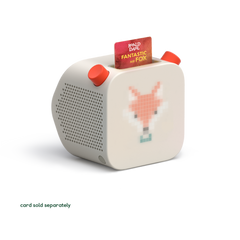How to Encourage Social Emotional Learning With Your Child
Exploring SEL Skills at Different Age Levels
Written by Kelly Oriard and Callie Christensen
If you’re immersed in the world of social-emotional learning (SEL), it might be easy to think that everyone knows what SEL is as well. Not only that, but you might assume that everyone knows how to support that emotional growth across different age groups. While many people are being introduced to the concept, it remains a new term for those outside of the education and therapeutic realms.
While there’s no right or wrong time to introduce SEL to your child, from a developmental standpoint, this’ll look different for babies, toddlers/preschoolers, and older kids. So what would it look like to support this growth? Great question! Today, we’re outlining a few things you can do to share social-emotional learning at each age level.
Babies: At around 6 months old, your baby is beginning to develop emotional identification skills. Notice your baby smiling back at you or another loved one? When they mimic others’ emotions, that’s emotional identification. It’s our ability to read others’ facial expressions and understand the emotion they’re feeling inside.
This is an important SEL topic because these early understandings are how babies make sense of what’s happening around them. You can begin teaching emotional identification using mirrors, social emotional learning books like our Creatures Full of Feeling Board Book. Ready to take the learning a step further? The Feels Set is an effective tool for helping babies understand what others are expressing when they show their emotions.
Another important piece of the developmental puzzle for babies is forming the all-important bonds with their primary caregiver. Forming a secure attachment falls directly in line with the Slumberkins routine: Connection, interaction, and reflection. Let’s dive into each!
Connect: Numerous studies show the benefits of hugging and holding children. This research has found that practicing these physical interactions from birth supports kids in forming strong emotional bonds with their caregivers. The simple act of cuddling together and reading a book can be one way to support that life-long connection.
Interact: Interacting can look different for everyone. One simple way to increase interaction is to point out the different creatures in the book, count the flowers, or point to different colors.
Reflect: Babies can’t repeat our affirmations, but you can try creating hand signals to choreograph the affirmation and help your baby mime it with you until they’re ready to do the motions themselves. A good example of this is the hand motions to “The Itsy Bitsy Spider.” This can also look like reviewing emotions together. “This is my happy face! This is my grump face! This is my silly face! Now can you show me your silly face?”
Toddlers/Preschoolers: As babies grow into toddlers, they begin to develop the ability to feel and express more complex emotions. Between 15-18 months, you may begin to see your child expressing care or concern for other children. They may also begin to feel injustice and express their emotions when things aren’t going how they would like. With these developmental milestones, your child is also learning how to cope with all of these new big emotions and can start to express themselves in ways that are hard for us as adults to experience. Things we can do at this age to support our toddlers and preschoolers with SEL are carryovers from the baby stage.
Connect: Connecting with toddlers and preschoolers becomes more complex. This age group loves one-on-one time spent creating and playing. If we offer them space to share their inner worlds with us, it fills up their love cups until they are overflowing! Snuggling up and reading or taking time to play a developmentally appropriate game together can help create a strong and loving bond.
Interact: Interacting at this age can be so much fun. Children are able to point to things and answer simple questions. You can count how many happy or sad faces you see, and you can talk about animals, colors, and letters. As kids reach 3 or 4, they may even begin to memorize the stories and recite them to you. Other great interactions for children at this age can be going on a walk and doing a simple scavenger hunt. Color hunts are also a fun activity to try with tinies. Take a small bag and choose a color of the day. Then take a walk and find nature items in that color and collect them. If you’re able, take a picture. If not, you can also bring these items home and create a color collage together.
Reflect: At this age you can start to act out the story, use silly voices, and have the kins recreate the story. You could role-play the different characters and your child can begin to try to say the affirmations back to you. Hearing our children say these affirming words is extremely moving and starts to lay the foundation for a positive inner voice. It’s also important to note that while young children may not be self-reflecting much, modeling reflection with stories like the Slumberkins board books can help set them up to be able to self-reflect later in life. Self-reflection can help with perspective taking and with self-awareness as children grow and develop.
Big Kids: Woohoo! You survived toddlerhood—congrats! Now we get to dive into the world of big kids. Our big kids are experiencing a wide range of emotions. They feel shame, guilt, sadness, worry, and self-doubt. But they also experience pride, satisfaction, elation, and self-assurance. Their social-emotional learning is extremely important now as they begin to form strong bonds with friends at school and their social interactions and relationship skills come to the forefront.
Connect: One thing is always true—our kids will always desire a connection to us. They won’t always ask for it in the same way, but the need for safety, security, and unconditional love never fades. At this age, connection may begin to evolve a bit. When your child is around 5-8 years old, they may begin to read the story to you or to a younger sibling. Connection may look like checking in with them about their day at school or something they are excited about. The old saying comes to mind: Presence is not present.
Interact: Our big kids will interact with us in new and fun ways that we may not have been able to do before. Maybe they’re your kitchen helper and they can help cook dinner. Or they could even help plan a meal once a week that the entire family can enjoy! Ask for their input on what would be fun and meaningful to them. This is key, because what they see as important may not necessarily align with what you think is meaningful. Simply asking them can really open the door for better communication and connection. Even if they love Minecraft and you are hopeless with video games, take an interest. Sit with them and ask questions and have them explain what they’re doing. Even just 15 minutes of interaction can help maintain that special parent-child relationship that will be vital as kids move into the tween and teen years.
Reflect: The beautiful thing about bigger kids is that they are getting closer to being able to self-reflect. Self-reflection has long been thought to begin around age 11, but some research believes that it can start earlier on. Self-reflection is a large component of social emotional learning. Having the ability to stop and reflect on what you have done or said, is pivotal to a healthy growth mindset and pro-social behaviors. As caregivers it can feel like we need to jump in to rescue our kids, but having them reflect on the event and asking them for input on how to do things differently going forward can really help big kids to stretch those critical thinking muscles and problem solving skills.
We hope you found this guide to introducing SEL to your child helpful! At first, while it may seem intimidating, many of the suggestions shared here can become habitual and establish loving routines all throughout your child’s development. You can now listen to Slumberkins Meditations on the Discover Section of the Yoto App!



